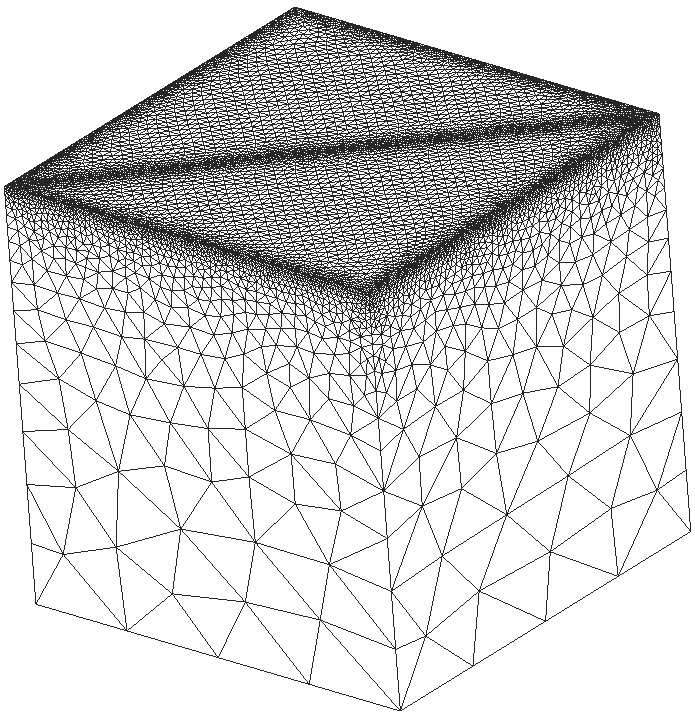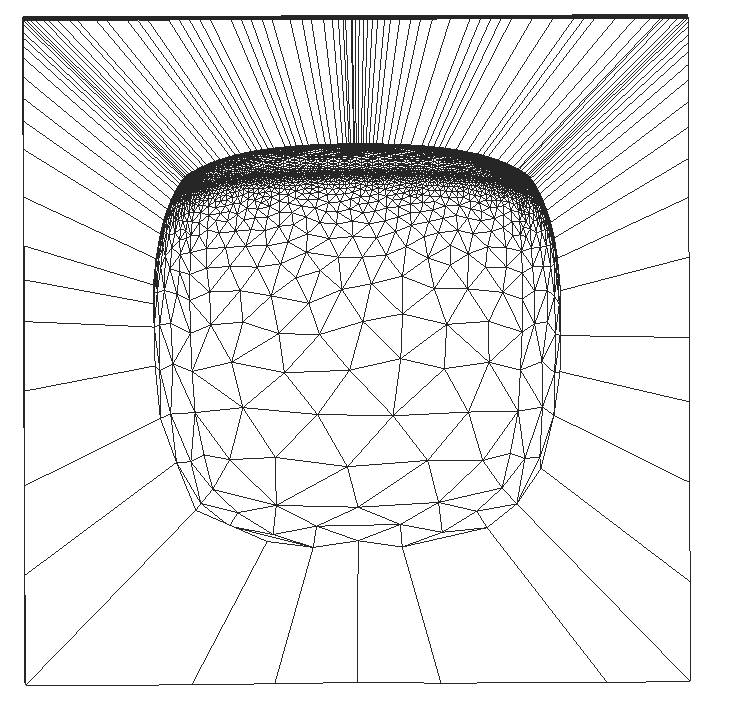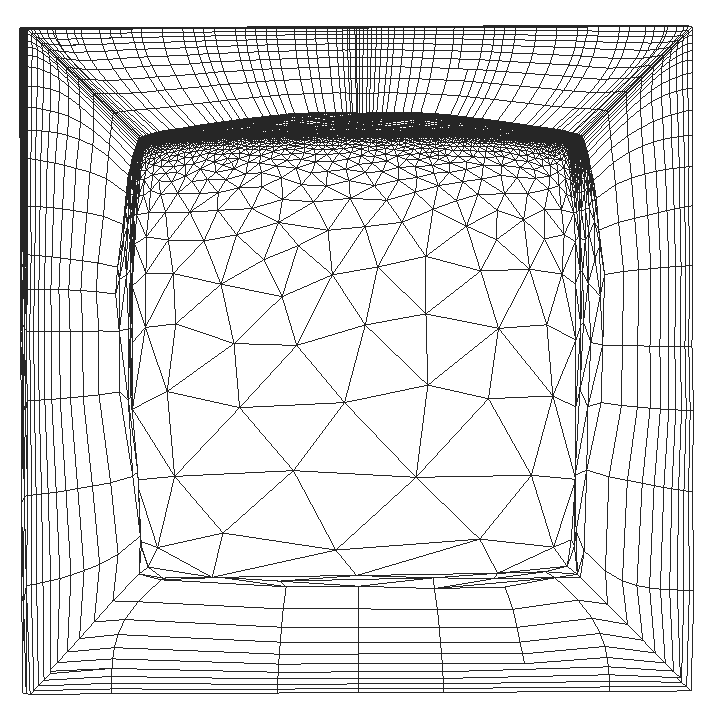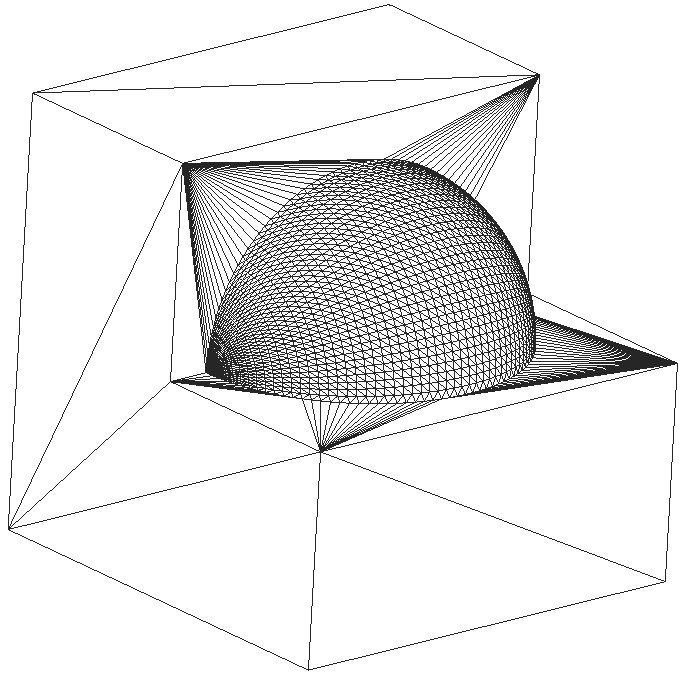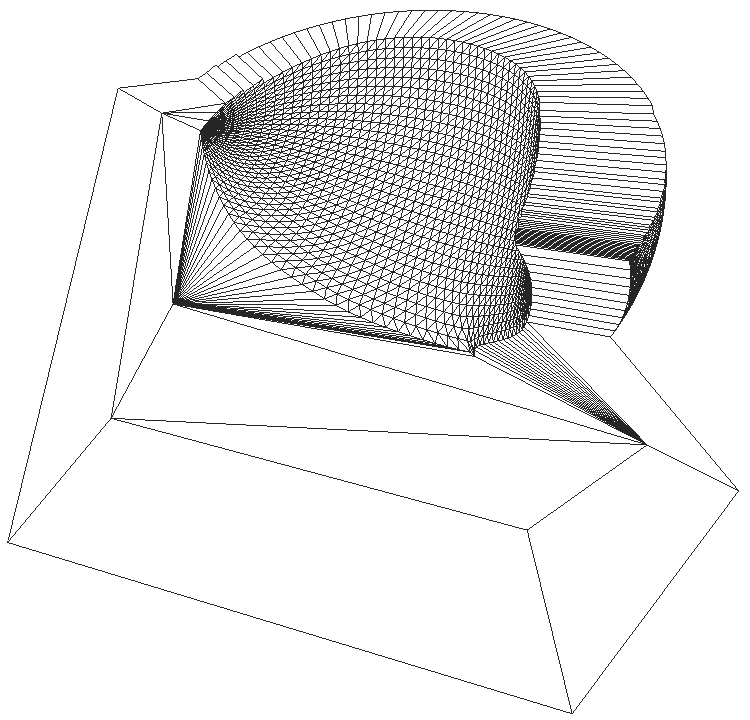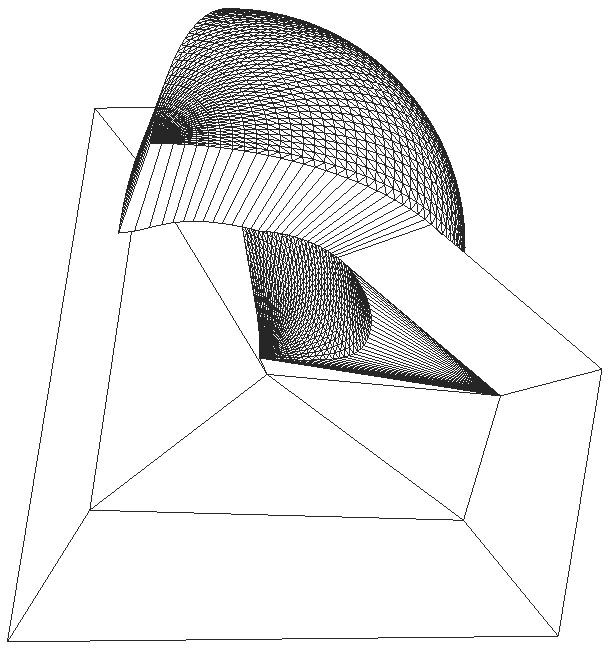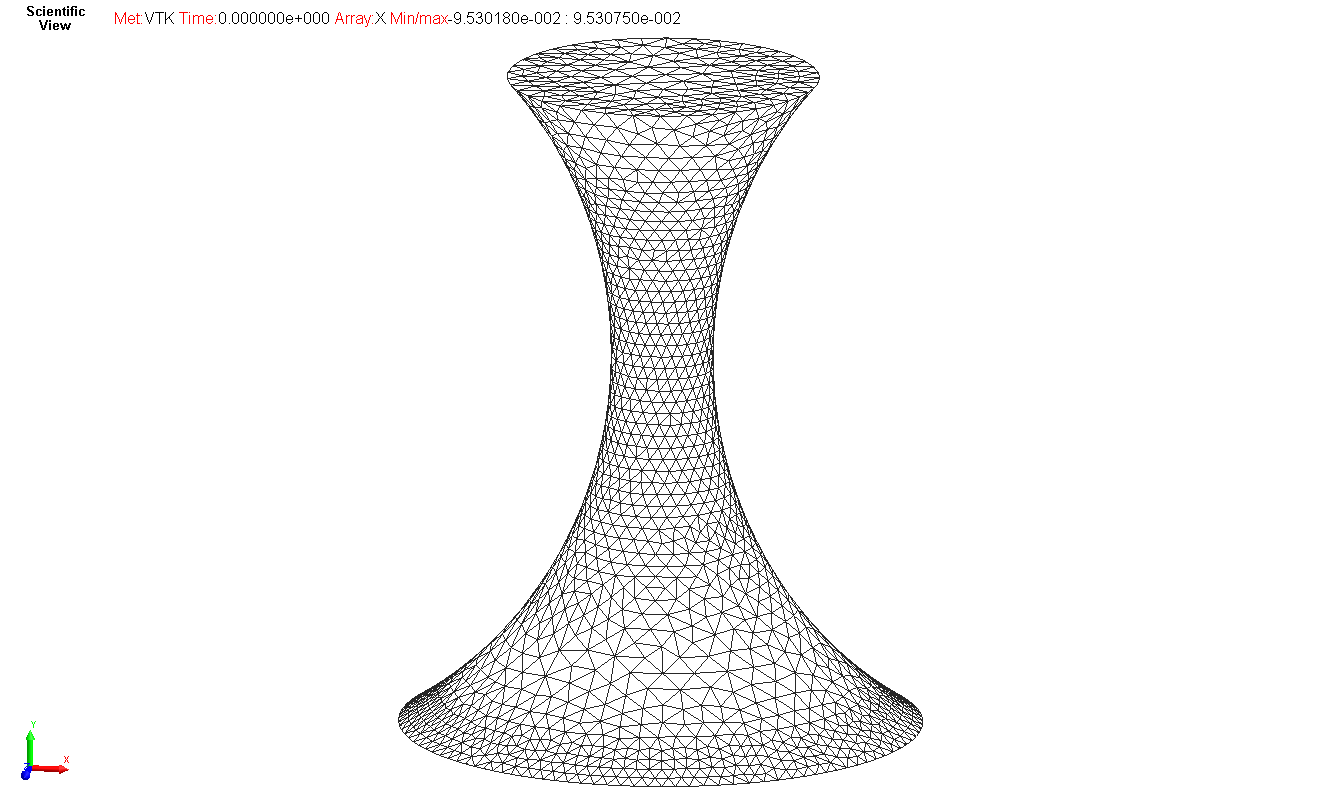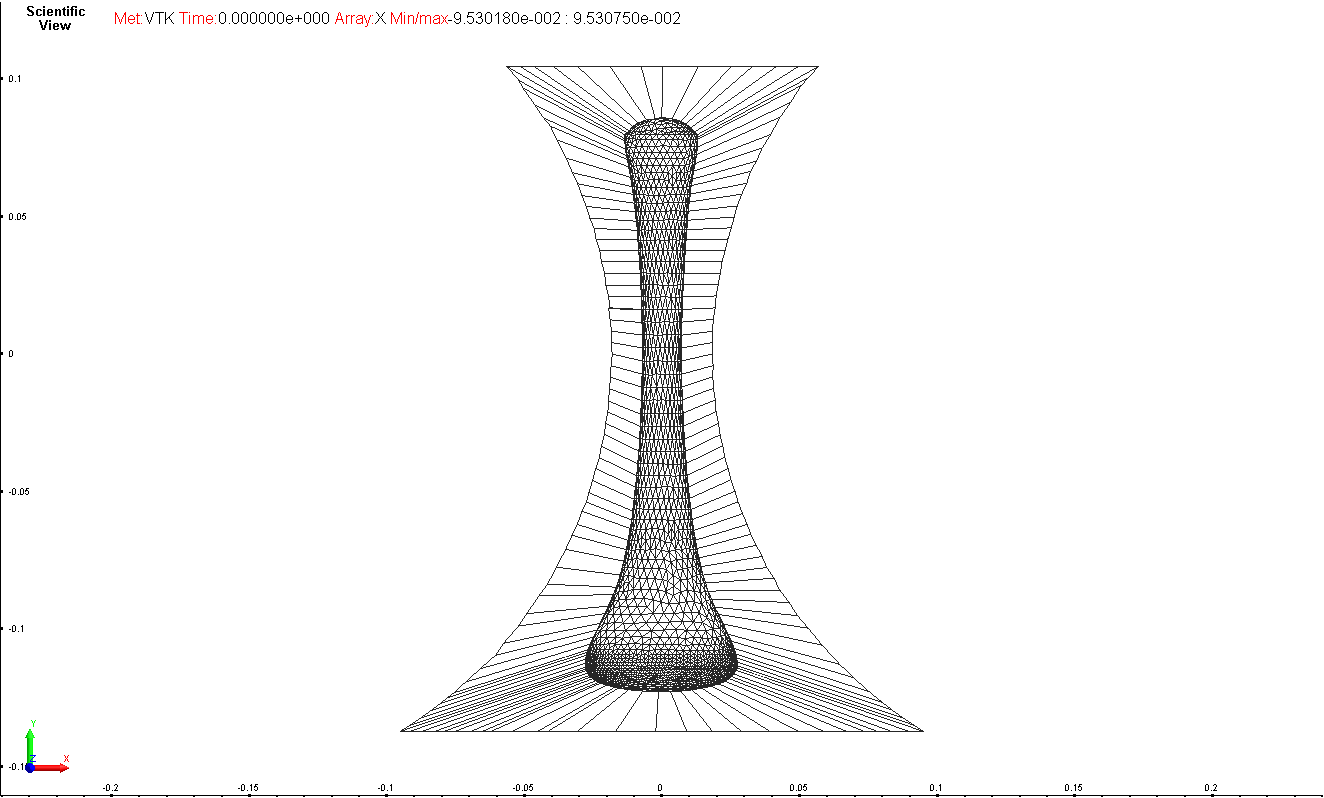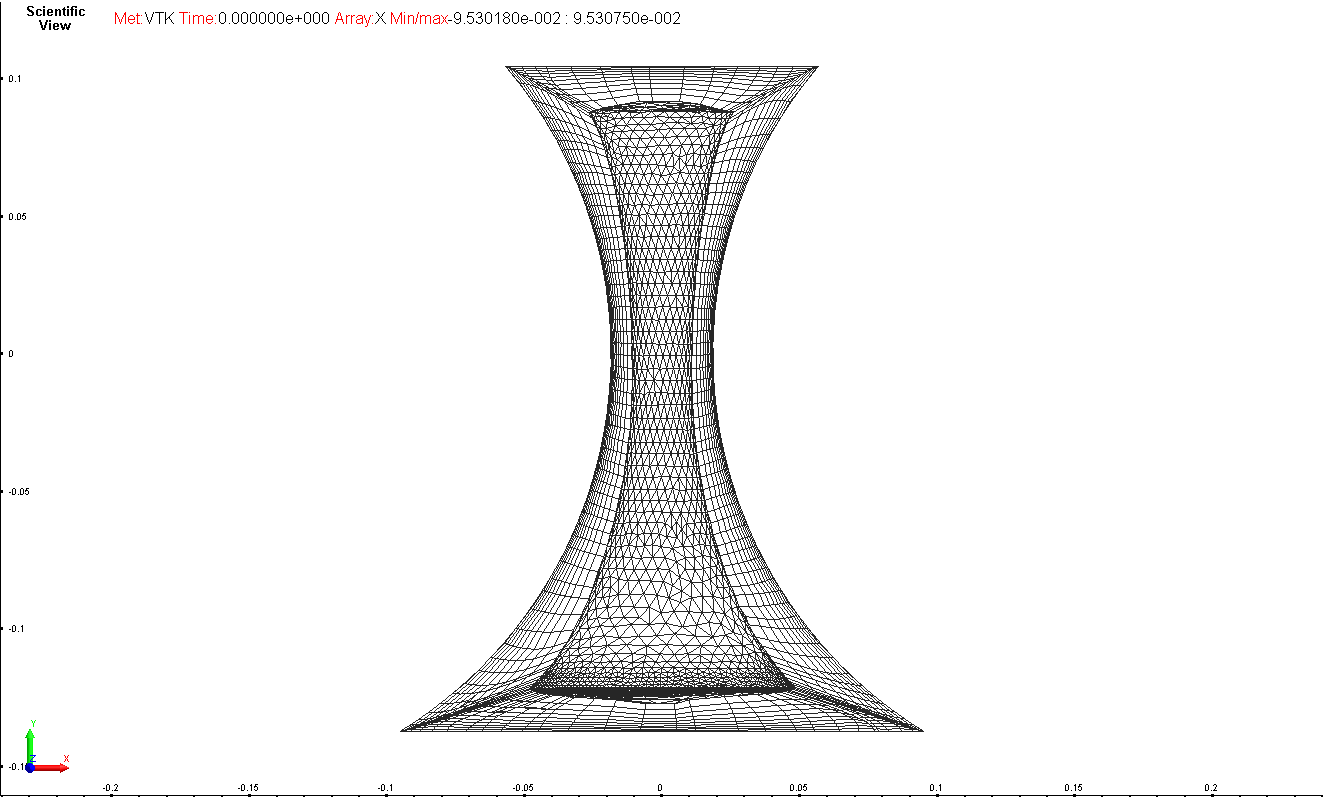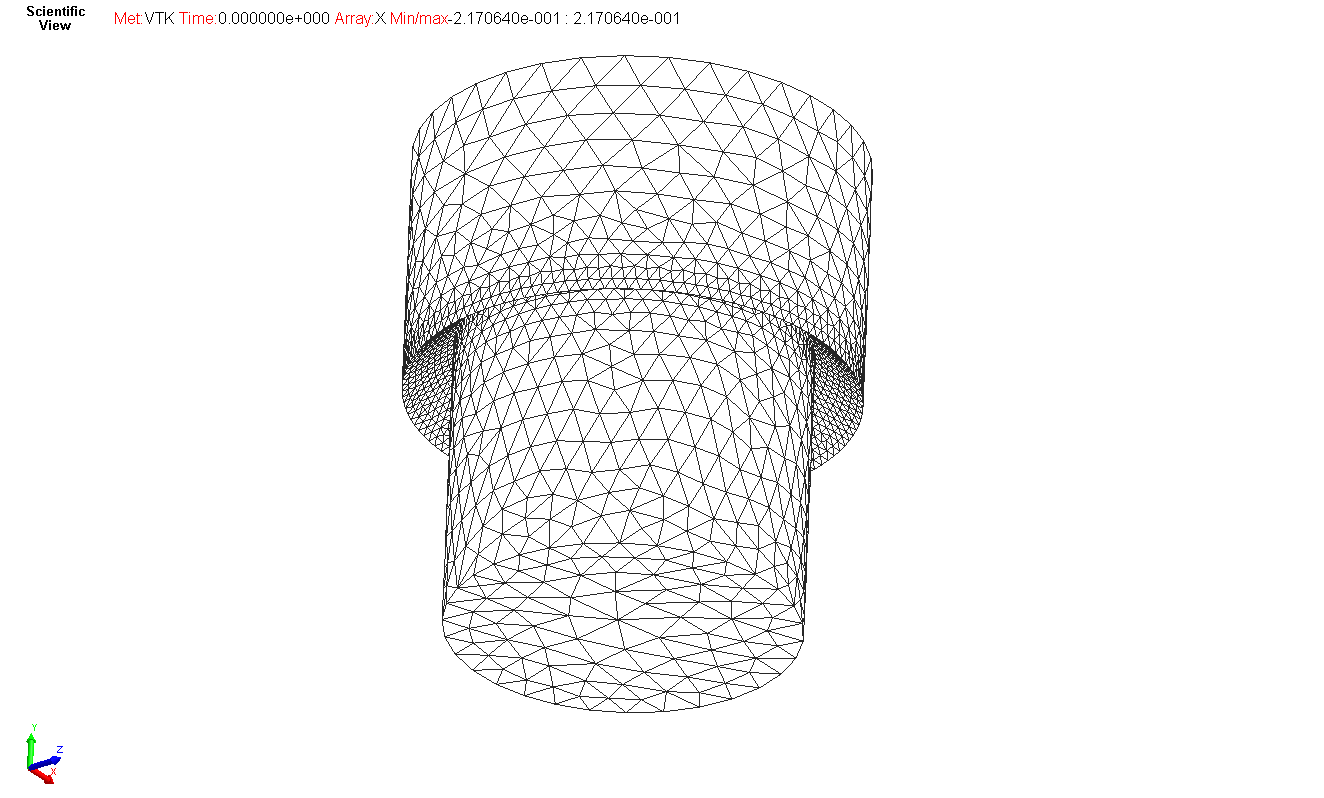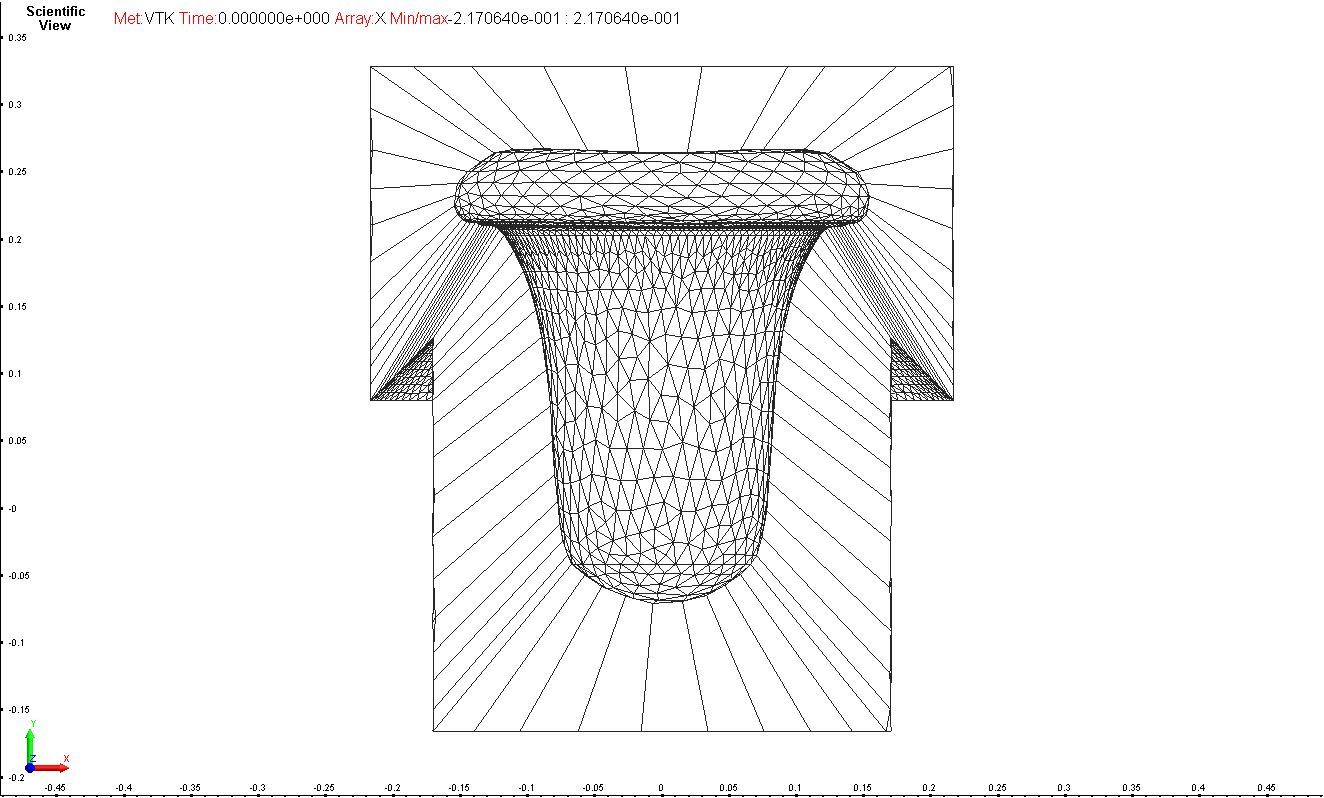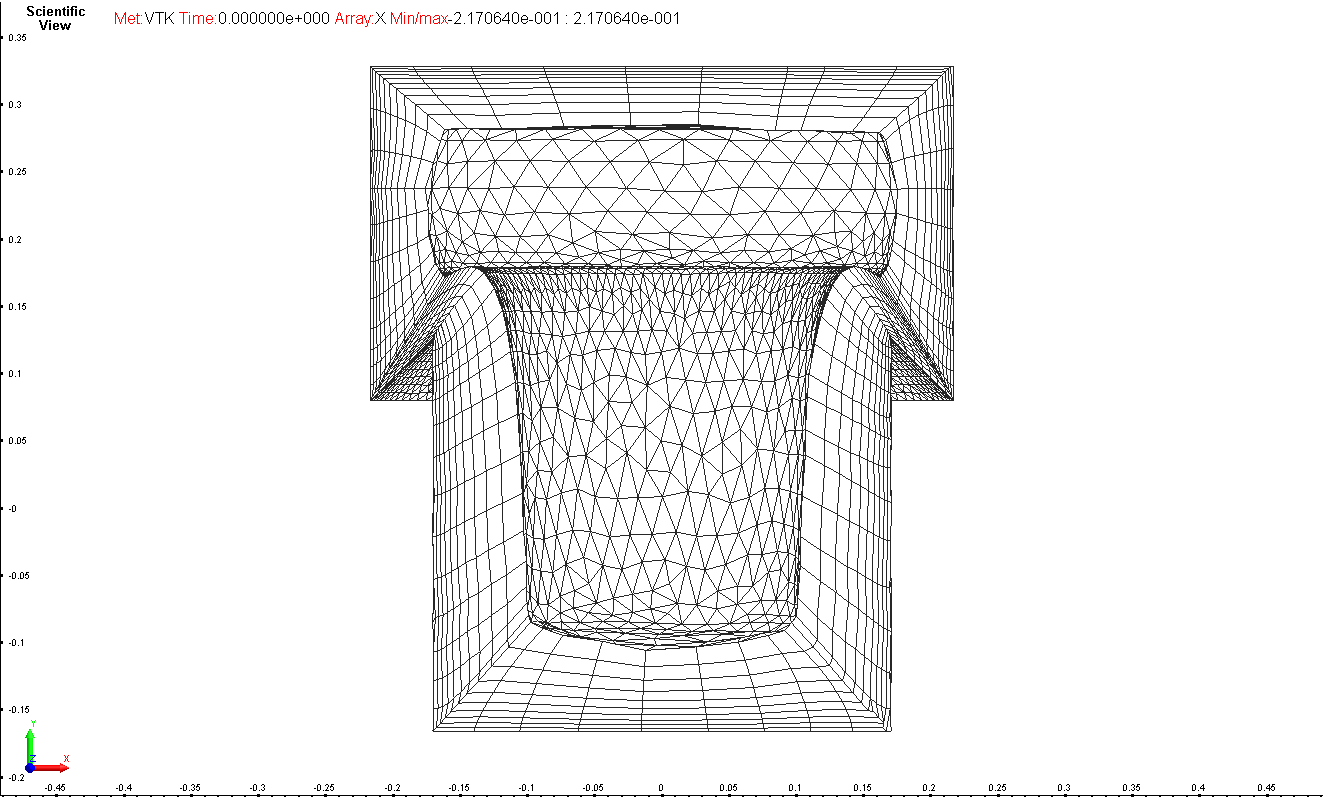group homepage
Russian version
prismatic_qi3d_poly project: generator of thick prismatic
layers around complex bodies.
New prismatic mesh generator based on elastic springback is
developed. Thin layer of highly compressed elastic cells is glued
to the boundary of domain. After that outer boundary of prisms is
freed and after relaxed springback new equilibrium elastic layer
is established with prescribed prism height
distribution.

In order to approximate hyperelastic functionals with polyconvex
elastic potentials finite element method is applied with a special
set og geometric quadratures. Depending on the choice of the
quadratures, the finiteness of the discrete energy may or may not
impose nondegeneracy of elastic cells. The most typical degeneracy
is due to cell twisting shown in figure which may arise when
simple vertex-based quadratures are used.
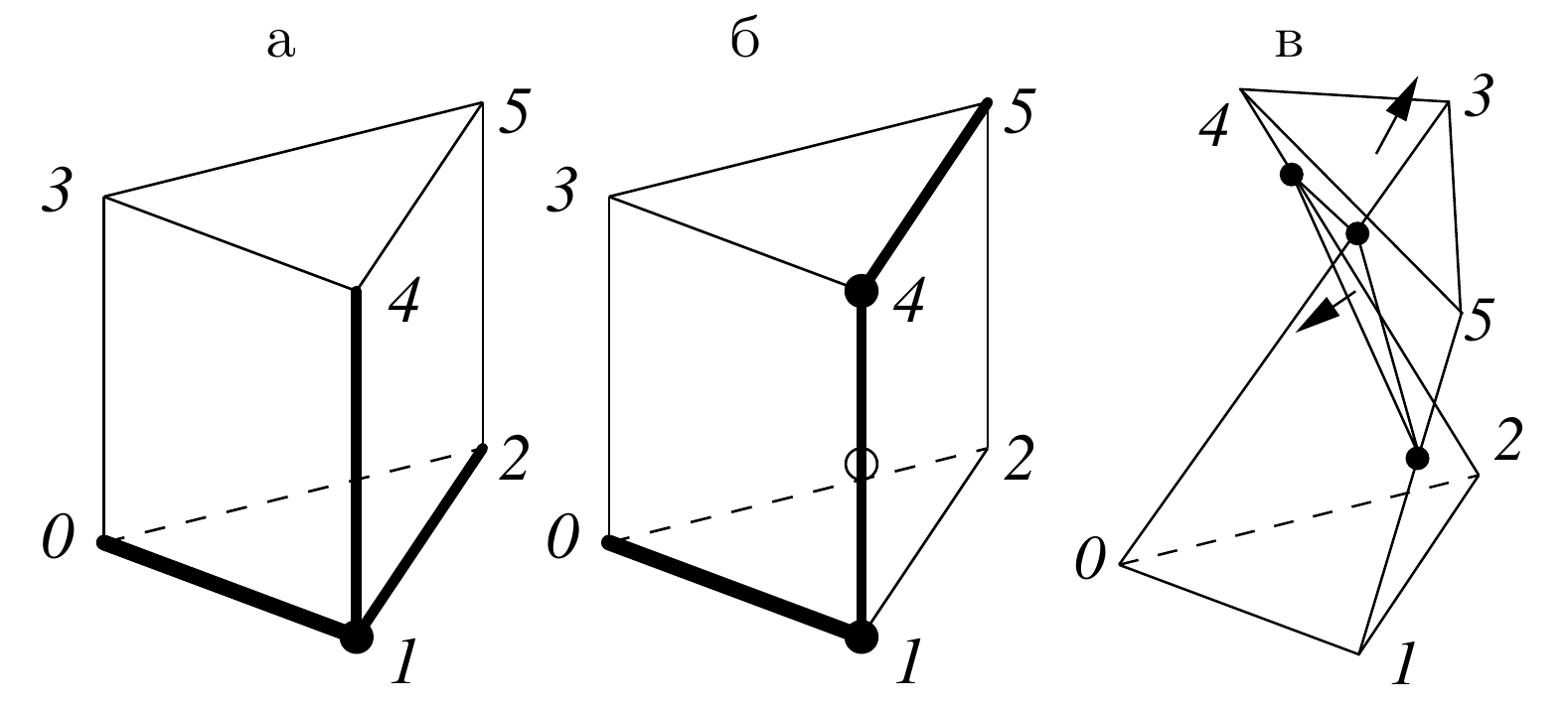
Camel model and one-cell-wide prismatic layer are shown below.

When 6-vertex quadrature rule is used for a triangular bilinear
prism the twisted prisms appear:
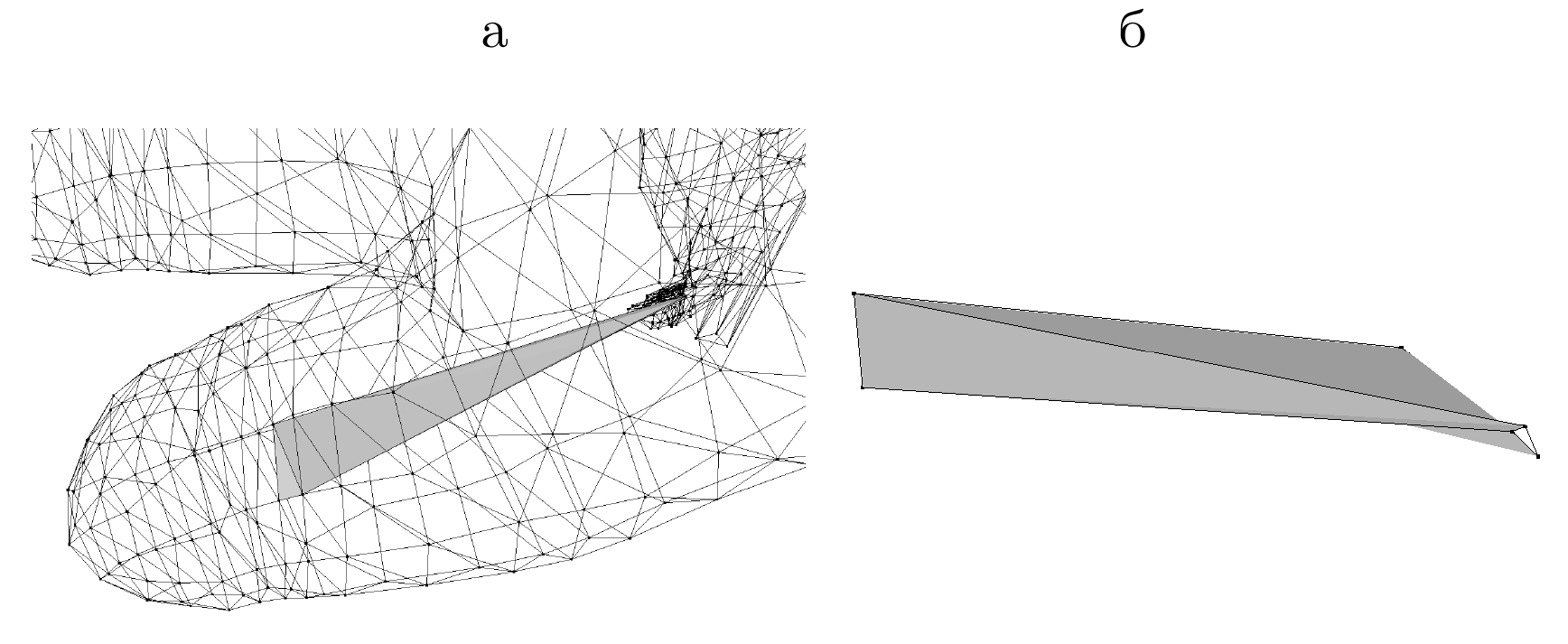
Special geometric 12-node quadrature guarantees that all prisms
are nondegenerate. The same prism is shown.
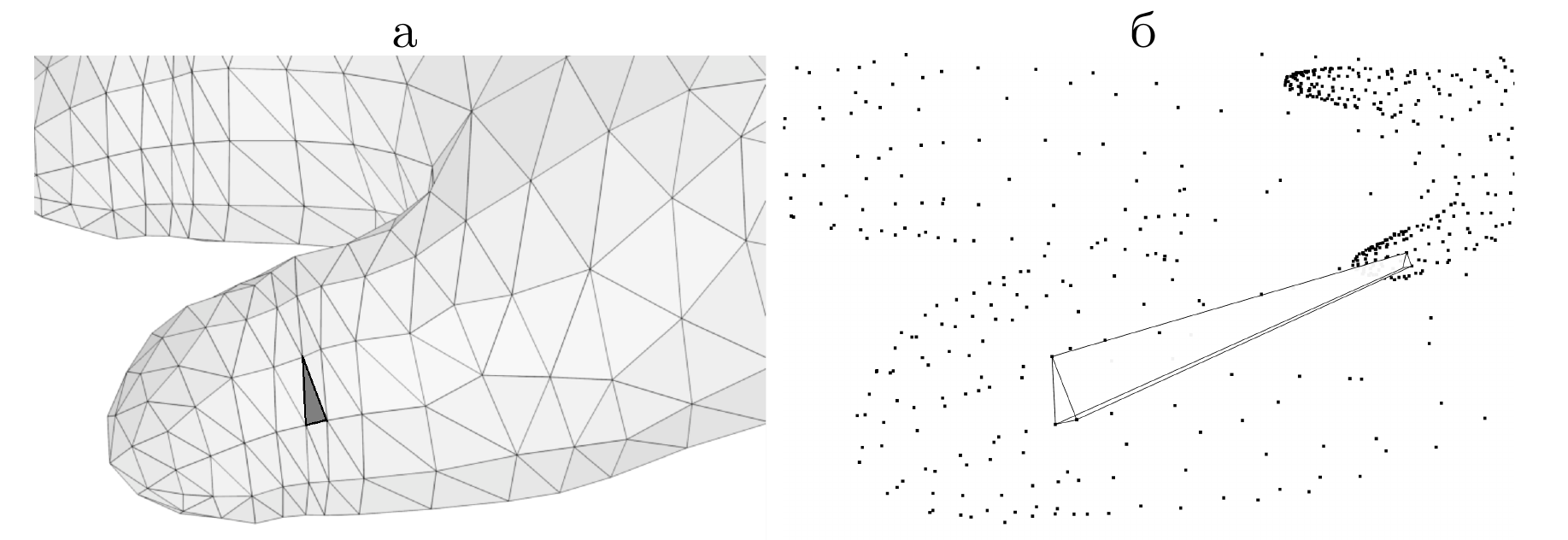
In fact generator of this prismatic layers provides the tool for
construction of generalized skeleton of 3d domain.
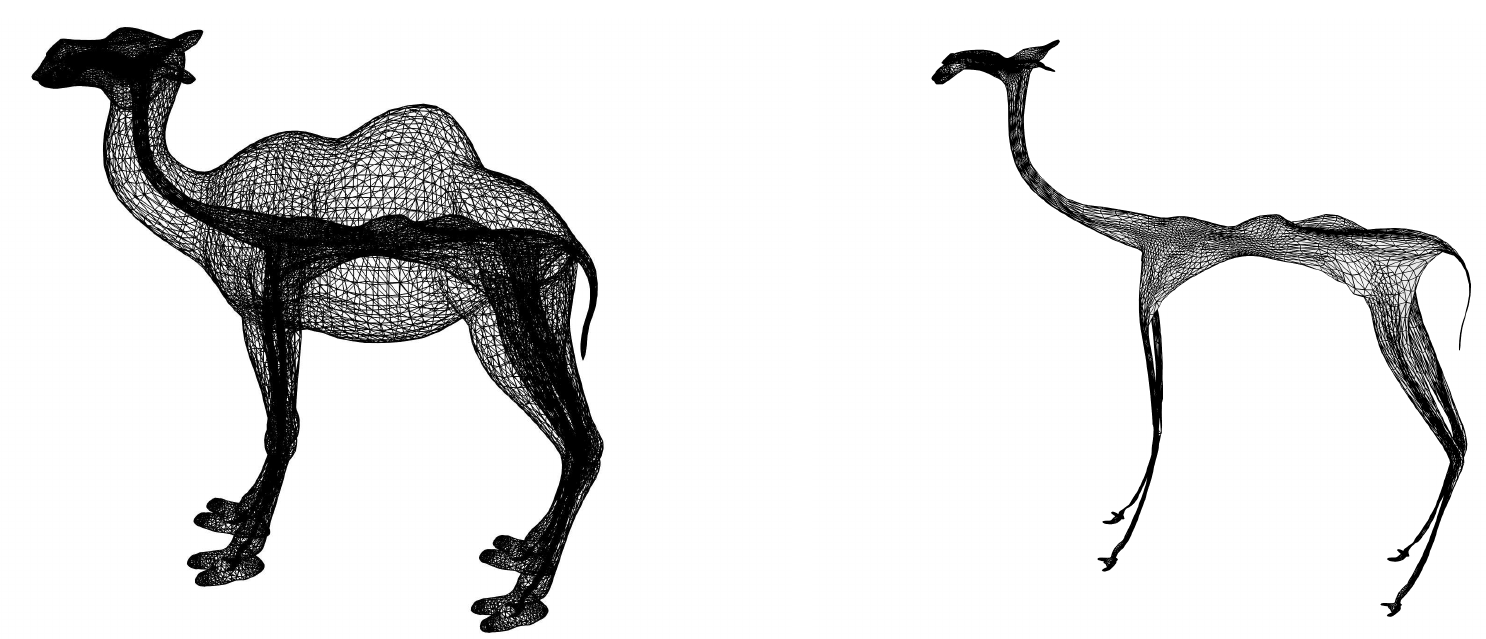
Such generalized skeleton is quite different from conventional
medial axis. Note that medial axis is the set of centers of
the interior balls which touch the boundary of domain at least in
two points. The concept of medial axis is quite useful for
prismatic layer generation since it encodes the information about
mutual positions of the domain boundary fragments. However direct
application of medial axis does not allow construction of thick
layers.

As soon as one-cell-wide prismatic layer with prescribed thickness
is constructed, advancing variational orthogonalization procedure
is applied. In this algorithm nonorthogonality measure if very
close to zero in internal one third of layer.

Prismatic mesh generation around aircraft: a) initial thin layer;
b) prism growth due to elastic springback; c) maximal single-cell
layer; d) excessive material cut-off to eliminate
self-intersections.
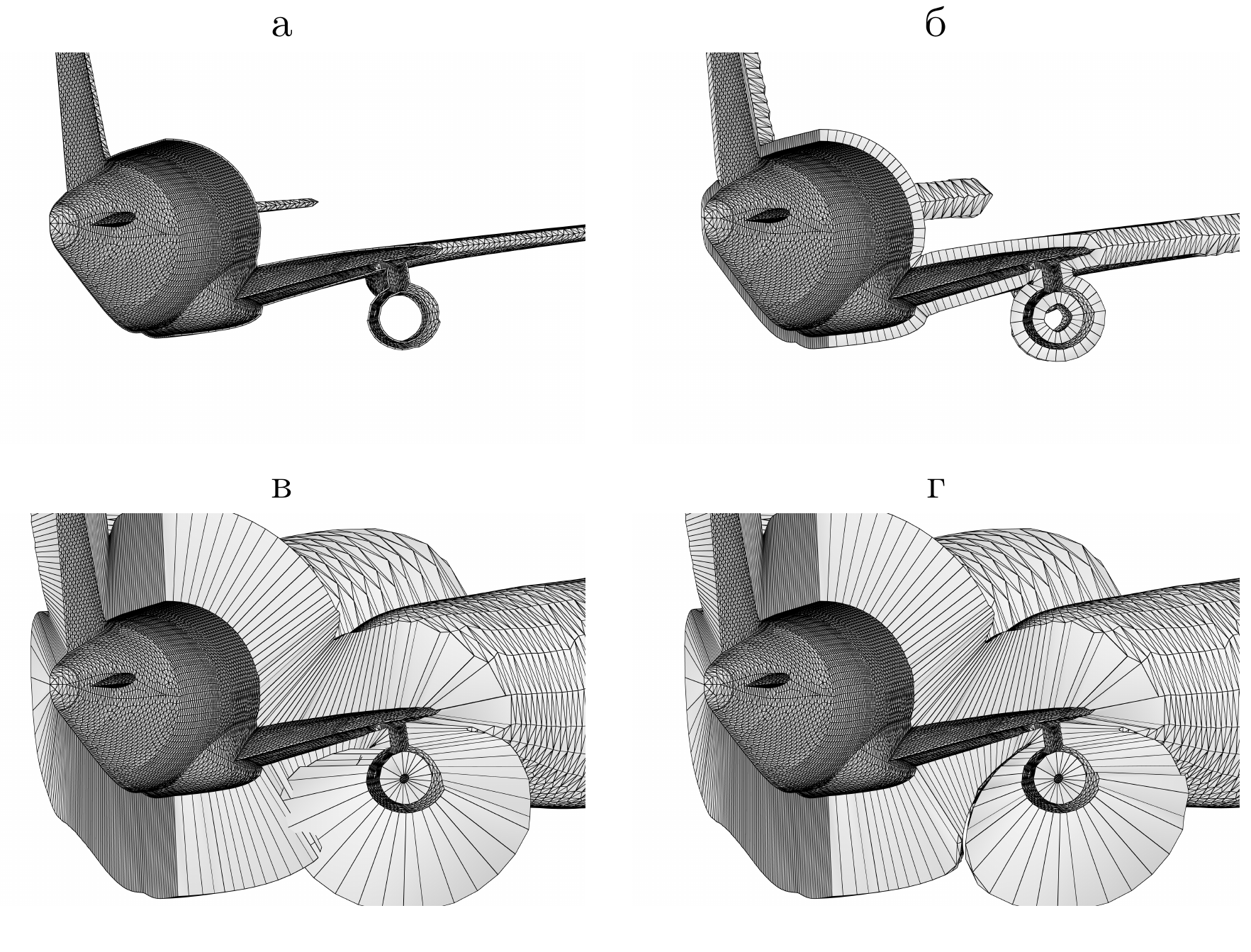
Continuation: a) outer boundary of layer is smoothed; b) first
step of orthogonalization; c) intermediate step of
orthogonalization;
d) final mesh which is orthogonal near boundary.
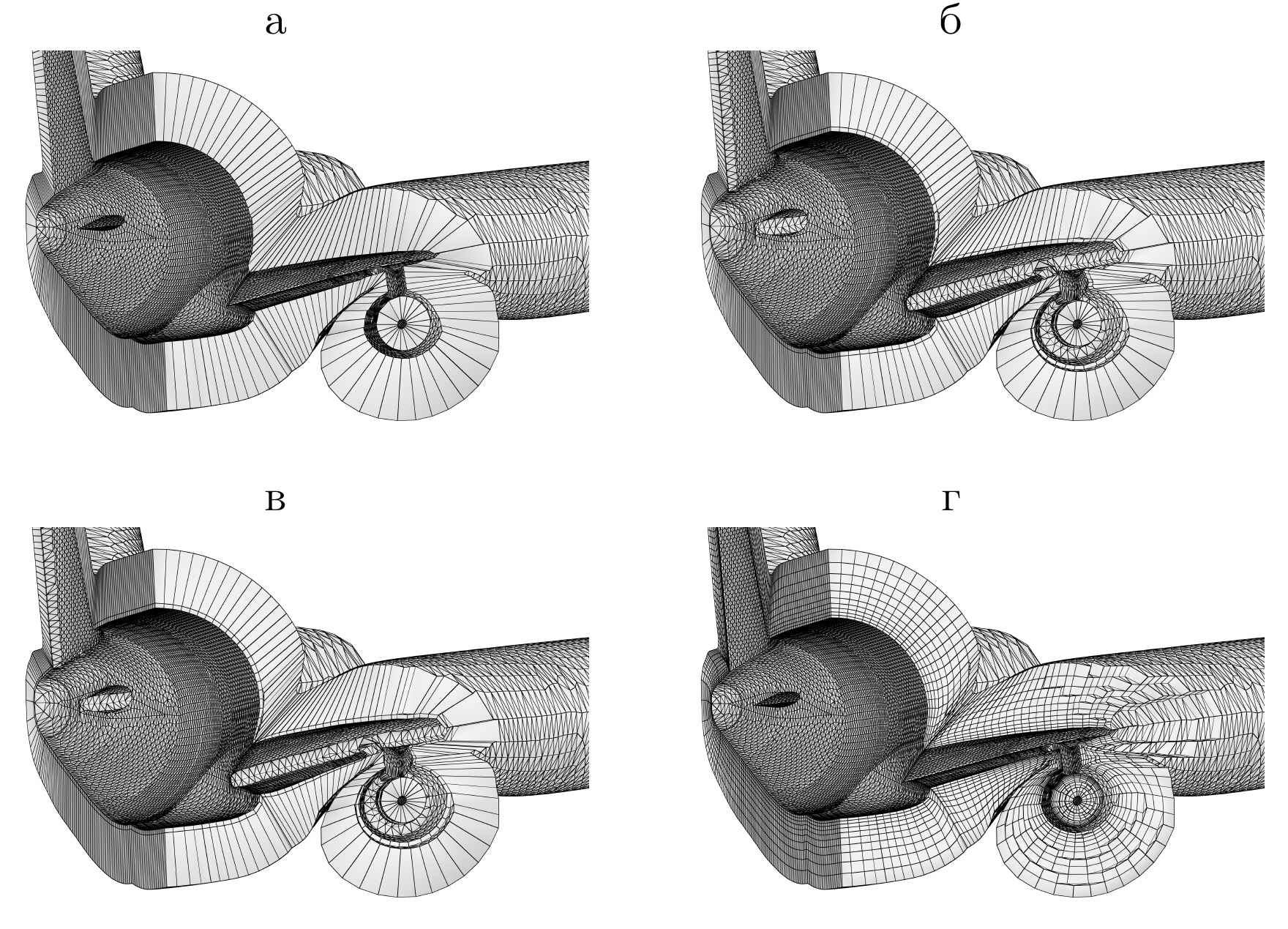
Variational method allows to construct prismatic layers which are
almost insensitive to the size and quality of the surface cells.
Sensibility of layer thickness to the ravines and dents on the surface
is relatively weak which makes big difference in comparison to methods
based on the medial axis concept.
Example of surface mesh with high variation of the
mesh size. It is clear that computed offset and prismatic layer is
almost insensitive to the cell size.
However, presence of very small cells leads to higher height to base
ratio for offset prisms which makes the springback problem more stiff
and requires larger number of iterations.
Sample layer in the presence very large and very small
surface cells. Arbitrary bad surface cell shapes are present
(dimensionless distortion measure reaches 104-105).
Sample prismatic layer in the presence of the sharp outcoming corners.
Sample prismatic layer in the presence of sharp outcoming and incoming corners placed close to each other..
Variational method allows to solve very stiff elastic springback
problems. When offset value is large and cell size on the surface
is small the height to base ratio for offset prisms can be above
1000.
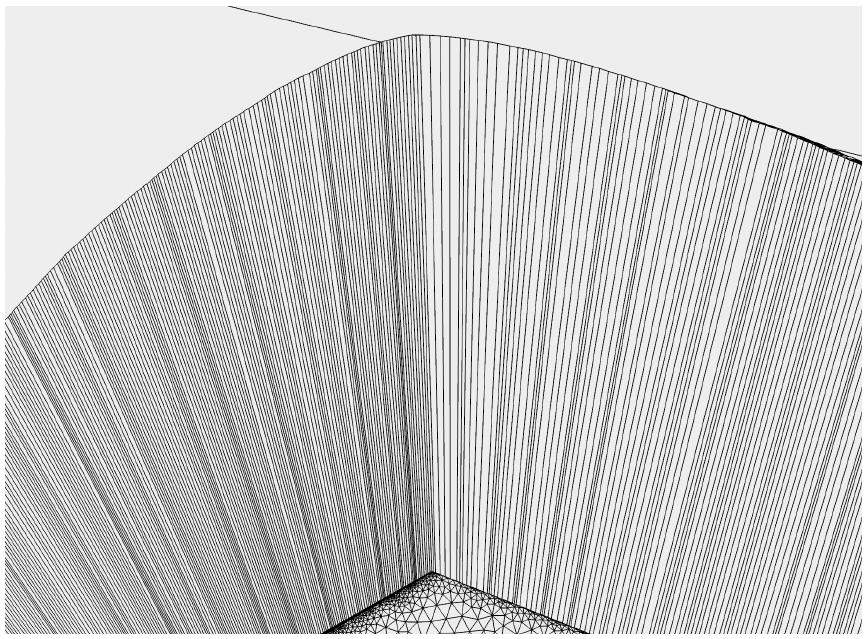
Example of badly posed layer generation problem with very narrow
slits and extremely small incoming and outcoming angles.

Example of prismatic mesh layer for hard test case.
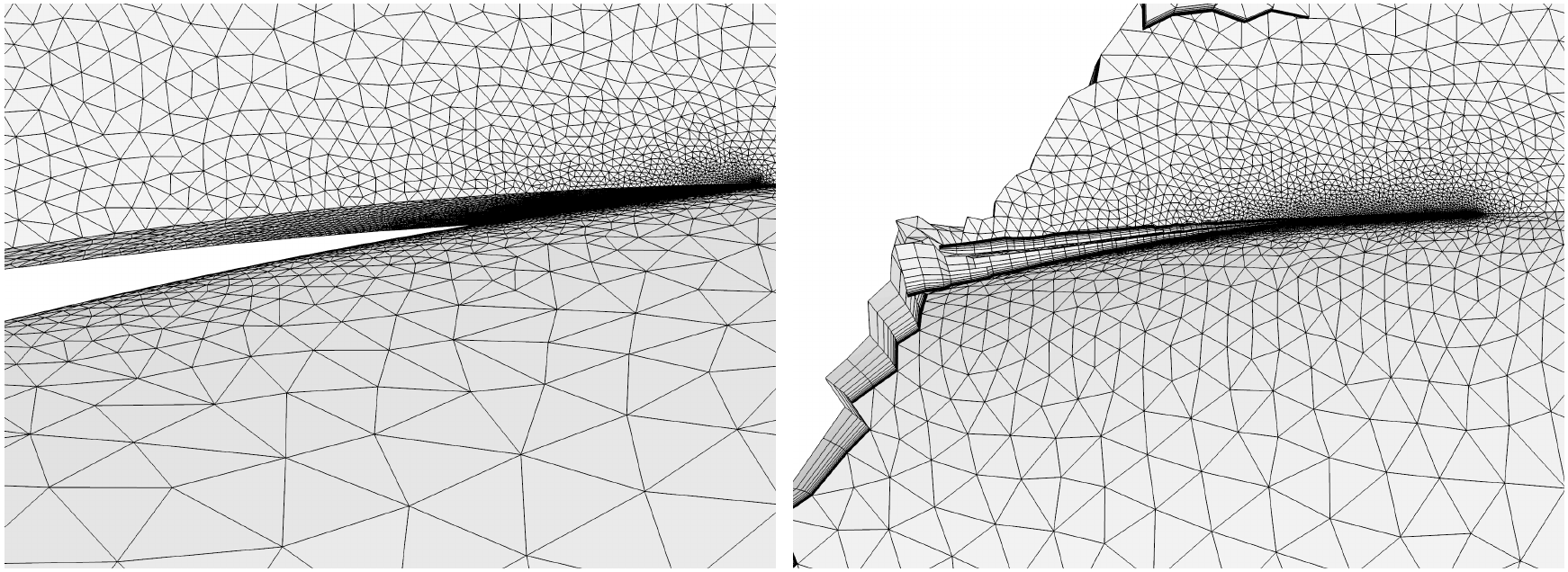
Construction of prismatic mesh layer around test model of TsAGI
re-entry vehicle.
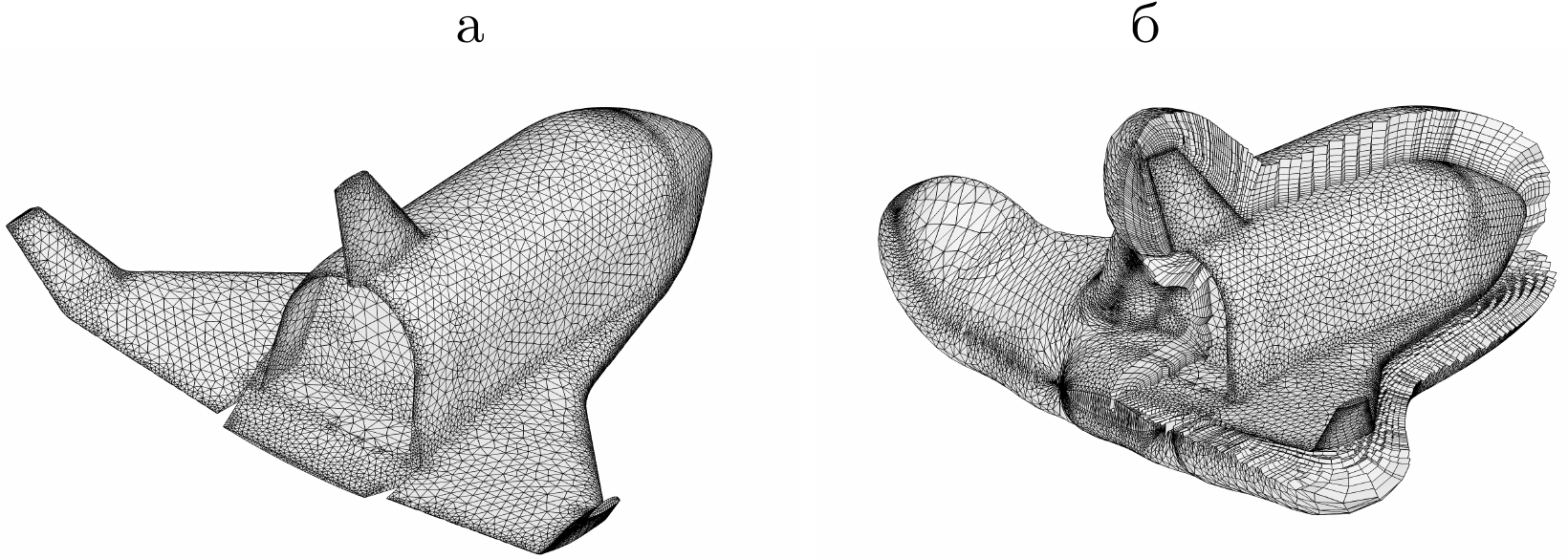
Sharp incoming and outcoming corners near rudder fins and
prismatic mesh which is orthogonal near boundary.
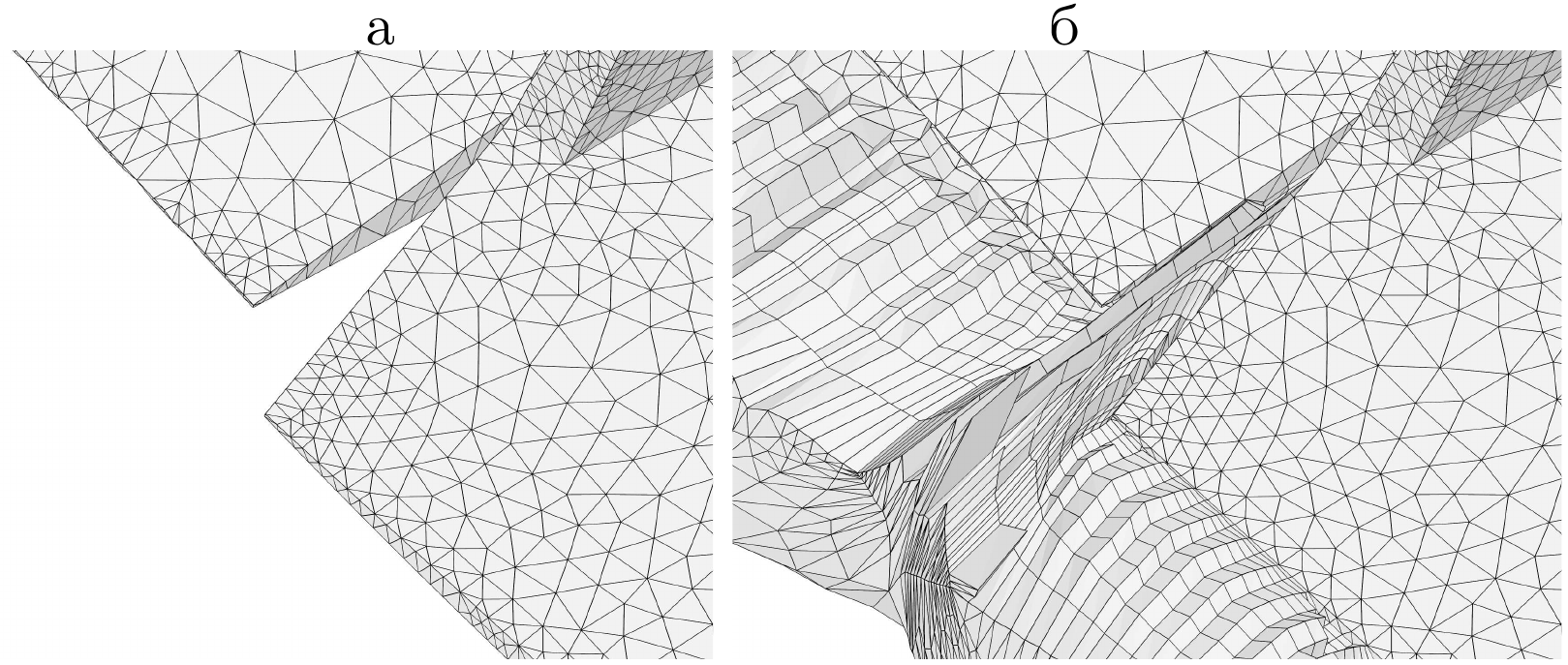
Prismatic mesh generators allows to mesh the domain as a whole.
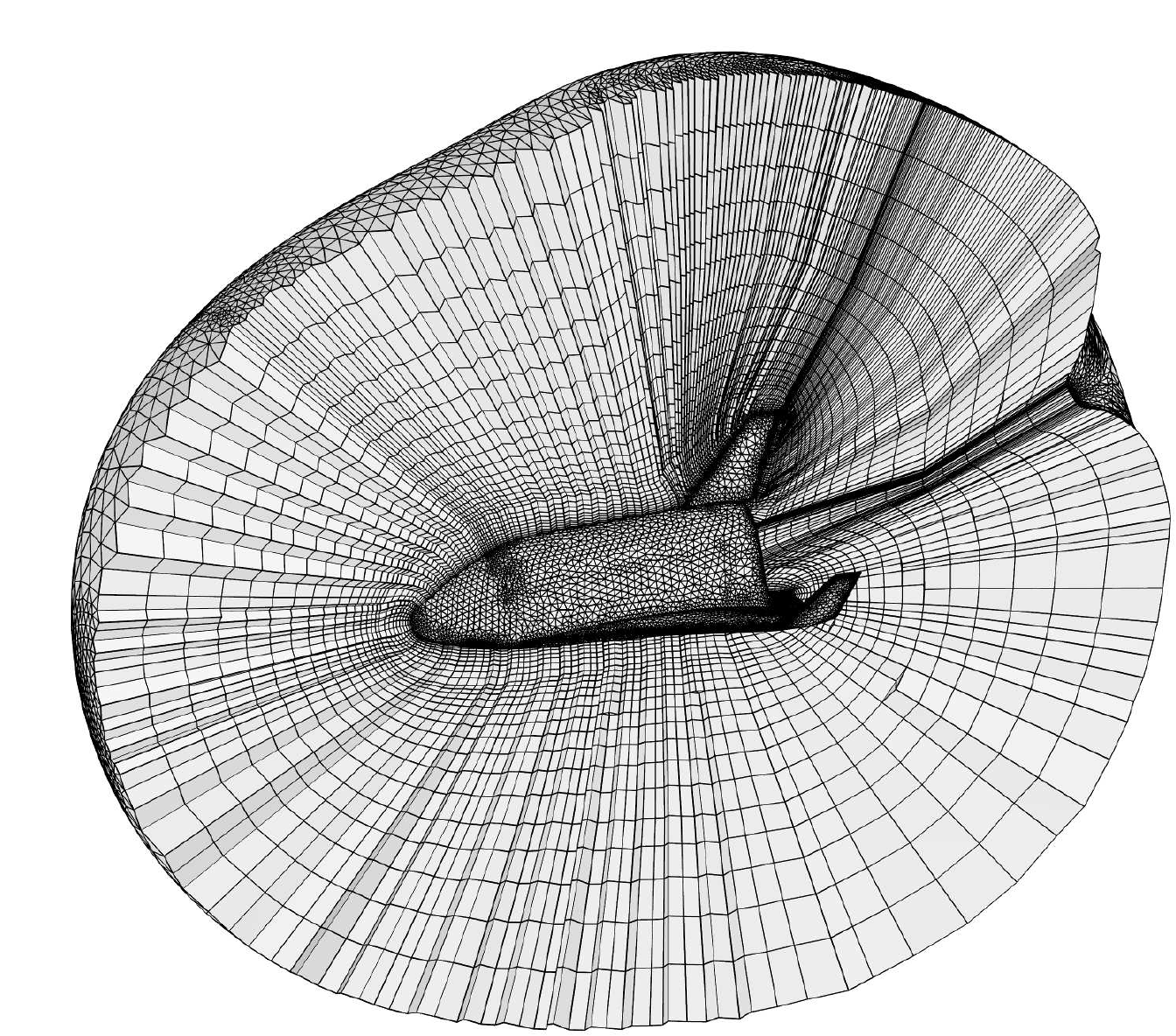
In some cases surface of the model is not Lipshitz-continuous at
certain conical vertices. This special case is included into
general layer mesh generation scheme.

